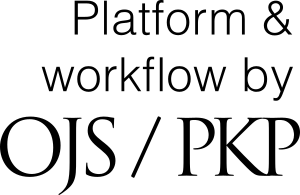Decade-Long Evolution of Diabetes Mellitus and the Impact of COVID-19 on Glycaemic Control: A Retrospective Study (2012–2022)
DOI:
https://doi.org/10.48797/sl.2025.290Keywords:
diabetes, HBA1c, COVID pandemicAbstract
The aims were to evaluate the evolution of diabetes mellitus (DM) in the 2012/22 decade and the influence of coronavirus disease 2019 (COVID-19). The study was carried out through retrospective analysis in an outpatient laboratory database. A total of 10,527 glycated hemoglobin (HBA1c) results corresponding to different users were analyzed retrospectively at three different times: 2012/13, 2017/18, and 2021/22. We determined the percentage of DM in these biennia and then the evolution of HBA1c levels of the diabetics themselves. By the World Health Organization (WHO) standards, in 2012/13, 2017/18, and 2021/22, 39.2%, 30.5% and 31.4% of the users of this laboratory had DM, respectively. The median (P25-P75) HbA1c decreased over the decade (p < 0.001): 7.7% (7.0-8.8) in 2012/13, 7.4% (6.8-8.3) in 2017/18, and 7.3% (6.8-8.2) in 2021/22. However, there were no statistically significant differences between 2017/18 and 2021/22 (p = 1.00). The same trend was observed for individuals older than 45 years (p < 0.001), but not for individuals between 18 and 44 years old (p = 0.339). There were no statistically significant differences (p = 0.374) between female and male individuals. The overall decrease in HbA1c levels since 2012/13 seems to indicate better disease management of individuals with DM. It is possible that the COVID-19 pandemic and all its health and social consequences have negatively affected the downward trend in HbA1c levels. More studies are needed to assess the long-term public health impact of COVID-19, particularly regarding DM and other non-communicable chronic diseases.
References
Syed, F.Z. Type 1 Diabetes Mellitus. Ann Intern Med 2022, 175, Itc33-itc48, doi:10.7326/aitc202203150.
Artasensi, A.; Pedretti, A.; Vistoli, G.; Fumagalli, L. Type 2 Diabetes Mellitus: A Review of Multi-Target Drugs. Molecules 2020, 25, doi:10.3390/molecules25081987.
ElSayed, N.A.; Aleppo, G.; Aroda, V.R.; Bannuru, R.R.; Brown, F.M.; Bruemmer, D.; Collins, B.S.; Hilliard, M.E.; Isaacs, D.; Johnson, E.L., et al. 2. Classification and Diagnosis of Diabetes: Standards of Care in Diabetes-2023. Diabetes Care 2023, 46, S19-s40, doi:10.2337/dc23-S002.
American Diabetes Association (ADA). 2. Classification and diagnosis of diabetes: standards of medical care in diabetes—2019. 2019, 42, S13-S28.
James, W.P.T. The epidemiology of obesity: the size of the problem. Journal of internal medicine 2008, 263, 336-352.
DeFronzo, R.A.; Ferrannini, E.; Groop, L.; Henry, R.R.; Herman, W.H.; Holst, J.J.; Hu, F.B.; Kahn, C.R.; Raz, I.; Shulman, G.I. Type 2 diabetes mellitus. Nature reviews Disease primers 2015, 1, 1-22.
Weickert, M.O.; Pfeiffer, A.F. Impact of dietary fiber consumption on insulin resistance and the prevention of type 2 diabetes. The Journal of nutrition 2018, 148, 7-12.
Freeman, A.M.; Acevedo, L.A.; Pennings, N. Insulin Resistance. In StatPearls, StatPearls Publishing, 2023.
Roglic, G. WHO Global report on diabetes: A summary. International Journal of Noncommunicable Diseases 2016, 1, 3.
Sun, H.; Saeedi, P.; Karuranga, S.; Pinkepank, M.; Ogurtsova, K.; Duncan, B.B.; Stein, C.; Basit, A.; Chan, J.C.N.; Mbanya, J.C., et al. IDF Diabetes Atlas: Global, regional and country-level diabetes prevalence estimates for 2021 and projections for 2045. Diabetes Res Clin Pract 2022, 183, 109119, doi:10.1016/j.diabres.2021.109119.
Wang, H.; Li, N.; Chivese, T.; Werfalli, M.; Sun, H.; Yuen, L.; Hoegfeldt, C.A.; Elise Powe, C.; Immanuel, J.; Karuranga, S., et al. IDF Diabetes Atlas: Estimation of Global and Regional Gestational Diabetes Mellitus Prevalence for 2021 by International Asso-ciation of Diabetes in Pregnancy Study Group's Criteria. Diabetes Res Clin Pract 2022, 183, 109050, doi:10.1016/j.diabres.2021.109050.
Zheng, Y.; Ley, S.H.; Hu, F.B. Global aetiology and epidemiology of type 2 diabetes mellitus and its complications. Nature reviews endocrinology 2018, 14, 88-98.
McMillin, J.M. Blood glucose. Clinical Methods: The History, Physical, and Laboratory Examinations. 3rd edition 1990.
World Health Organization (WHO). WHO Director-General’s opening remarks at the media briefing on COVID-19. 2020.
Lima-Martínez, M.M.; Carrera Boada, C.; Madera-Silva, M.D.; Marín, W.; Contreras, M. COVID-19 and diabetes: A bidirectional relationship. Clin Investig Arterioscler 2021, 33, 151-157, doi:10.1016/j.arteri.2020.10.001.
Khunti, K.; Del Prato, S.; Mathieu, C.; Kahn, S.E.; Gabbay, R.A.; Buse, J.B. COVID-19, Hyperglycemia, and New-Onset Diabetes. Diabetes Care 2021, 44, 2645-2655, doi:10.2337/dc21-1318.
Westwell-Roper, C.Y.; Ehses, J.A.; Verchere, C.B. Resident macrophages mediate islet amyloid polypeptide-induced islet IL-1β production and β-cell dysfunction. Diabetes 2014, 63, 1698-1711, doi:10.2337/db13-0863.
Eguchi, K.; Nagai, R. Islet inflammation in type 2 diabetes and physiology. J Clin Invest 2017, 127, 14-23, doi:10.1172/jci88877.
Kumar, A.; Arora, A.; Sharma, P.; Anikhindi, S.A.; Bansal, N.; Singla, V.; Khare, S.; Srivastava, A. Is diabetes mellitus associated with mortality and severity of COVID-19? A meta-analysis. Diabetes Metab Syndr 2020, 14, 535-545, doi:10.1016/j.dsx.2020.04.044.
Vasbinder, A.; Anderson, E.; Shadid, H.; Berlin, H.; Pan, M.; Azam, T.U.; Khaleel, I.; Padalia, K.; Meloche, C.; O'Hayer, P., et al. Inflammation, Hyperglycemia, and Adverse Outcomes in Individuals With Diabetes Mellitus Hospitalized for COVID-19. Diabetes Care 2022, 45, 692-700, doi:10.2337/dc21-2102.
Deng, W.; Bao, L.; Song, Z.; Zhang, L.; Yu, P.; Xu, Y.; Wang, J.; Zhao, W.; Zhang, X.; Han, Y., et al. Infection with SARS-CoV-2 can cause pancreatic impairment. Signal Transduction and Targeted Therapy 2024, 9, 98, doi:10.1038/s41392-024-01796-2.
Sinagra, E.; Shahini, E.; Crispino, F.; Macaione, I.; Guarnotta, V.; Marasà, M.; Testai, S.; Pallio, S.; Albano, D.; Facciorusso, A., et al. COVID-19 and the Pancreas: A Narrative Review. In Life, 2022; Vol. 12.
Wu, Y.; Ding, Y.; Tanaka, Y.; Zhang, W. Risk factors contributing to type 2 diabetes and recent advances in the treatment and prevention. International journal of medical sciences 2014, 11, 1185.
Borse, S.P.; Chhipa, A.S.; Sharma, V.; Singh, D.P.; Nivsarkar, M. Management of type 2 diabetes: current strategies, unfocussed aspects, challenges, and alternatives. Medical Principles and Practice 2021, 30, 109-121.
Sugandh, F.; Chandio, M.; Raveena, F.; Kumar, L.; Karishma, F.; Khuwaja, S.; Memon, U.A.; Bai, K.; Kashif, M.; Varrassi, G., et al. Advances in the Management of Diabetes Mellitus: A Focus on Personalized Medicine. Cureus 2023, 15, e43697, doi:10.7759/cureus.43697.
World Health Organization (WHO). WHO COVID-19 dashboard. https://data.who.int/dashboards/covid19/cases
Albani, V.; Loria, J.; Massad, E.; Zubelli, J. COVID-19 underreporting and its impact on vaccination strategies. BMC Infectious Diseases 2021, 21, 1111, doi:10.1186/s12879-021-06780-7.
Gibbons, C.L.; Mangen, M.-J.J.; Plass, D.; Havelaar, A.H.; Brooke, R.J.; Kramarz, P.; Peterson, K.L.; Stuurman, A.L.; Cassini, A.; Fèvre, E.M., et al. Measuring underreporting and under-ascertainment in infectious disease datasets: a comparison of methods. BMC Public Health 2014, 14, 147, doi:10.1186/1471-2458-14-147.
Kim, S.H.; Arora, I.; Hsia, D.S.; Knowler, W.C.; LeBlanc, E.; Mylonakis, E.; Pratley, R.; Pittas, A.G. New-Onset Diabetes After COVID-19. J Clin Endocrinol Metab 2023, 108, e1164-e1174, doi:10.1210/clinem/dgad284.
Ssentongo, P.; Zhang, Y.; Witmer, L.; Chinchilli, V.M.; Ba, D.M. Association of COVID-19 with diabetes: a systematic review and meta-analysis. Sci Rep 2022, 12, 20191, doi:10.1038/s41598-022-24185-7.
He, Q.; Wang, C.; Wang, Y.; Chen, G.; Zhou, Y.; Wu, Y.; Zhong, M. Efficacy and safety of glucocorticoids use in patients with COVID-19: a systematic review and network meta‑analysis. BMC Infect Dis 2023, 23, 896, doi:10.1186/s12879-023-08874-w.
Fetters, K.B.; Judge, S.P.; Daar, E.S.; Hatlen, T.J. Burden of Hyperglycemia in Patients Receiving Corticosteroids for Severe COVID-19. Mayo Clin Proc Innov Qual Outcomes 2022, 6, 484-487, doi:10.1016/j.mayocpiqo.2022.07.004.
Singh, A.K.; Khunti, K. COVID-19 and Diabetes. Annual Review of Medicine 2022, 73, 129-147, doi:https://doi.org/10.1146/annurev-med-042220-011857.
Mekanna, A.N.; Panchal, S.K.; Li, L. Beyond lockdowns: a systematic review of the impacts of COVID-19 lockdowns on dietary pattern, physical activity, body weight, and food security. Nutr Rev 2023, 81, 790-803, doi:10.1093/nutrit/nuac088.
Vilanova, C.D.D.A.; Sporquio, N.G.; de Quevedo Barcelos, L.; Marques, C.T.; Colpo, E. Glycemic Control in People With Type 2 Diabetes Mellitus Seen in Primary Care During the Covid-19 Pandemic. 2023.
Okuno, T.; Iritani, O.; Kodera, K.; Hama, D.; Kane, A.; Morigaki, K.; Terai, T.; Maeno, N.; Morimoto, S. Unexpected decline in glycated hemoglobin level after emergency COVID‐19 measures in three robust older Japanese women with prediabetes/mild type‐2 diabetes. Geriatrics & Gerontology International 2022, 22, 457.

Downloads
Published
How to Cite
Issue
Section
License
Copyright (c) 2025 Rui Azevedo, Inês Duro, Paulo Dessa Aguiar, Mary Duro

This work is licensed under a Creative Commons Attribution 4.0 International License.
In Scientific Letters, articles are published under a CC-BY license (Creative Commons Attribution 4.0 International License), the most open license available. The users can share (copy and redistribute the material in any medium or format) and adapt (remix, transform, and build upon the material for any purpose, even commercially), as long as they give appropriate credit, provide a link to the license, and indicate if changes were made (read the full text of the license terms and conditions of use).
The author is the owner of the copyright.








